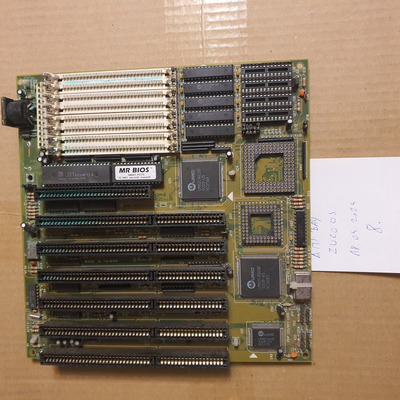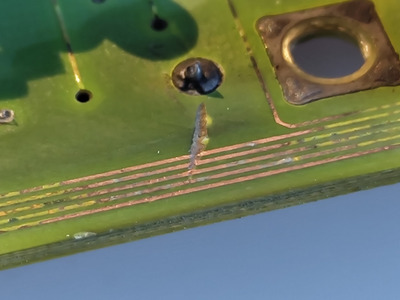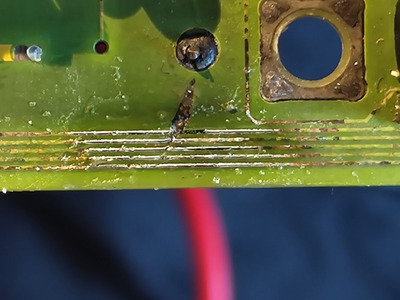First post, by DamienC
I don't remember how I acquired this board, but it was working when I got it despite having some pretty severe corrosion from an exploded barrel battery. About 10 or 15 years ago I smoked an AMD 386DX-40 in it by being careless and putting it in the wrong way. The board hasn't worked since, but I have been attempting to clear out some older PC components and I'd like to tinker with this and see if I can get it working because it was a very nice 386DX board and I have a few TI 486DLC chips lying around.
The board has 6 16-bit ISA slots, 1 8-bit slot, a UMC 82C48X chipset, CPU and FPU sockets, 8 30-pin SIMM slots, 2 Cache banks (IIRC this had 128k cache installed), a JETKey 3.0 keyboard BIOS, and most interestingly, a Mr. BIOS chip. I've never used a better BIOS. It had so many options.
I have no clue who made this board, and the board itself is very spartan as far as markings go. There is a serial number and manufacture date on the side of one of the ISA slots, and has "Made in Taiwan" etched on the board. No other markings appear anywhere, and there isn't even a legend for the few jumpers it has.
Here are some pics:





And I used my EPROM programmer to dump the Mr. BIOS. File is attached.
Anyone have an idea of the make/model, or even just what the jumpers do?




